What are native voice call recordings?
Native Voice call recordings automatically record all inbound and outbound voice conversations to ensure interactions are captured and documented accurately.
-
Call recordings can be enabled per tenant, making it accessible to all users within that tenant.
-
Recordings are stored in the Voice management application, offering an easy way to access all recordings from within the CM.com platform.
-
The Voice management app supports API integration for convenient retrieval of audio files into your systems, facilitating efficient data management.
-
To make the life of Agents easier, users can employ in-conversation playback to review calls within the conversation in real-time, providing timely insights.
This feature adds clarity and accountability to call handling processes in customer service operations.
How do I use this feature?
When enabled for your Agent Inbox tentant, a call recording starts as soon as “Call connection” has been established. This is indicated by the “Call recording started” message.
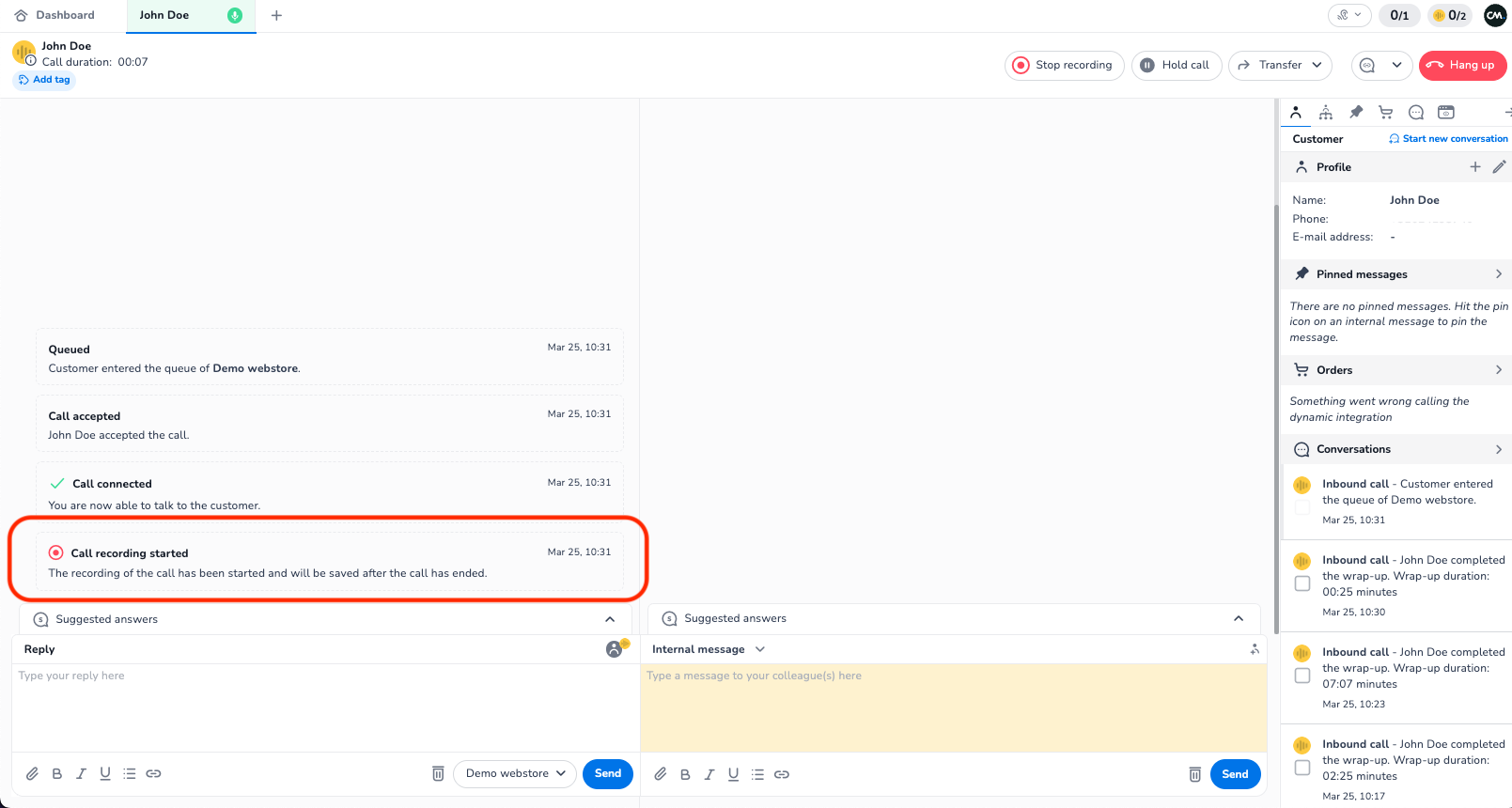
The recording will record all audio that is audible to the customer, this means that if the call is put on hold, this audio is recoded and not the audio of the agent.
Stop call recording
If for any reason the agent wants to stop recording before the end of the conversation, the agent can do so by activating the “Stop recording” button in the top right corner of the conversation view.
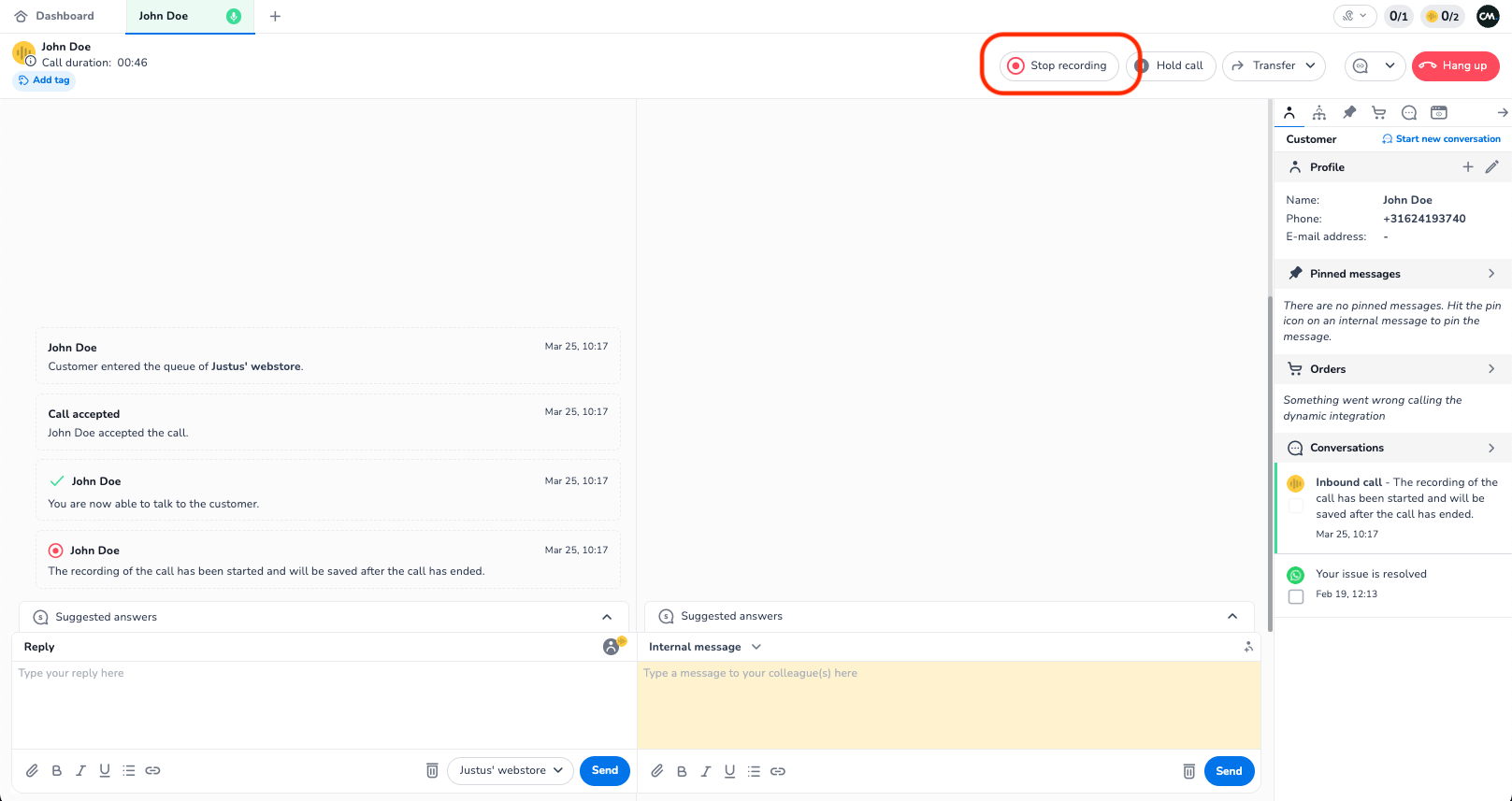
In addition, if the conversation comes to an end, and the agent uses the “Hang up” button, or the customer cuts the connection, the call recording will stop and become available within the conversation.
Audio file playback
Once a call has ended, the call recording will become available within the conversation. Based on the access setting of the user, either a audio player or description of the audio file will be visible for the user.
Audio player
The audio player can be used to directly playback the audio recording of the call within the conversation.
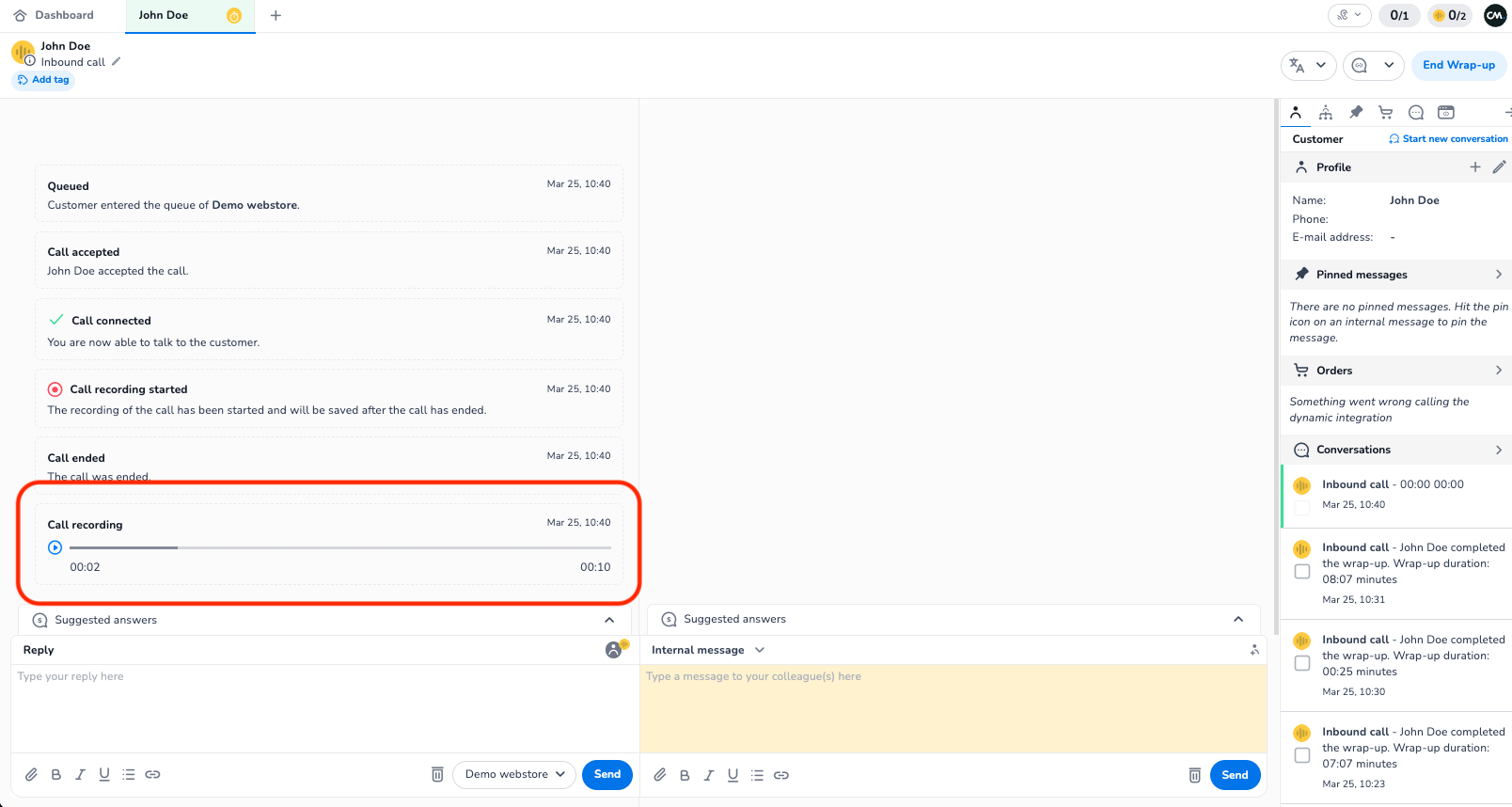
If the user does not have the privilages to listen to the call within the conversation, the file location will become visible to the user.
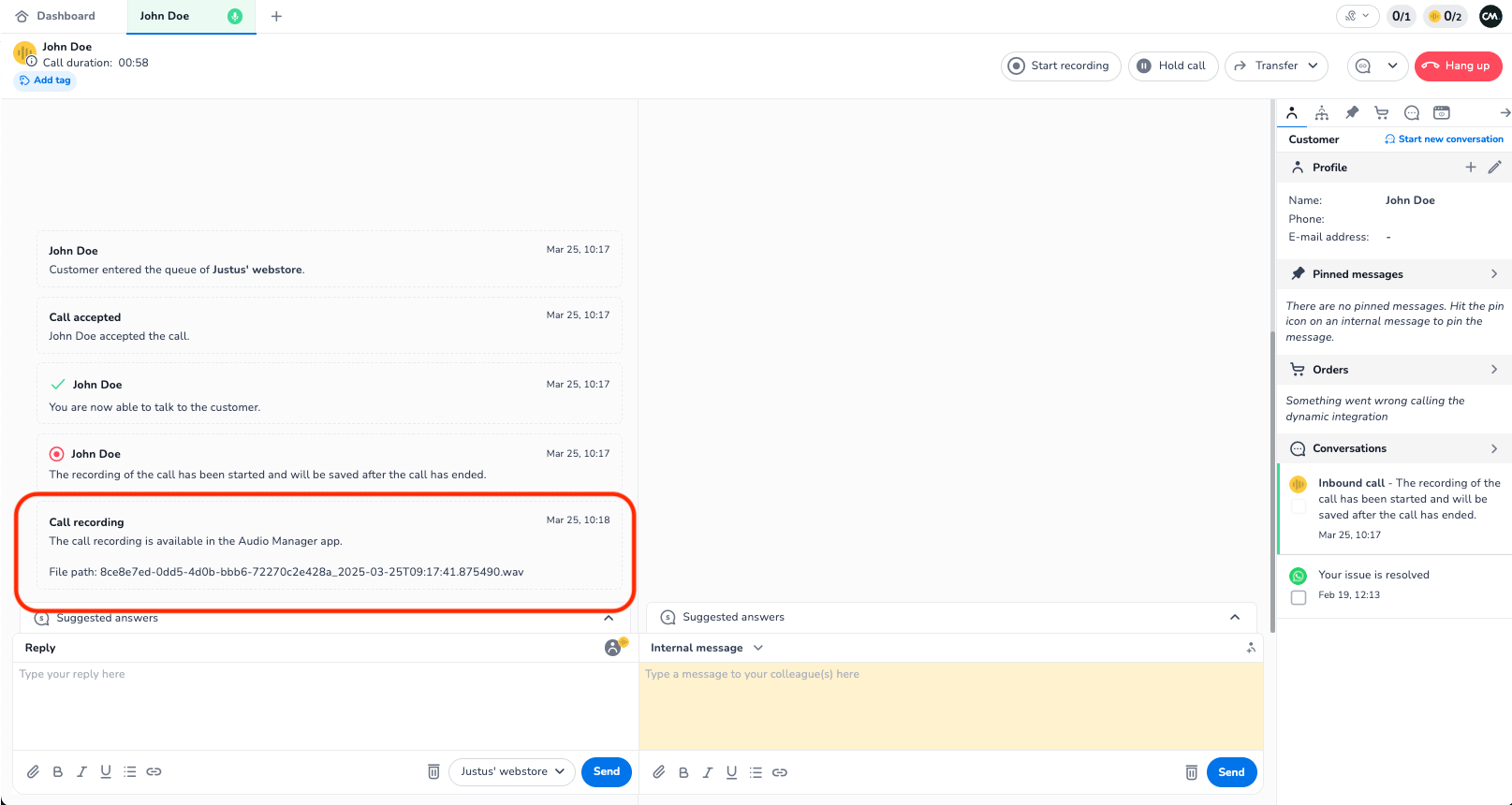
User acces to recordings
The access can be managed on user-level by checking the Yes-radio button for Access to call recordings.
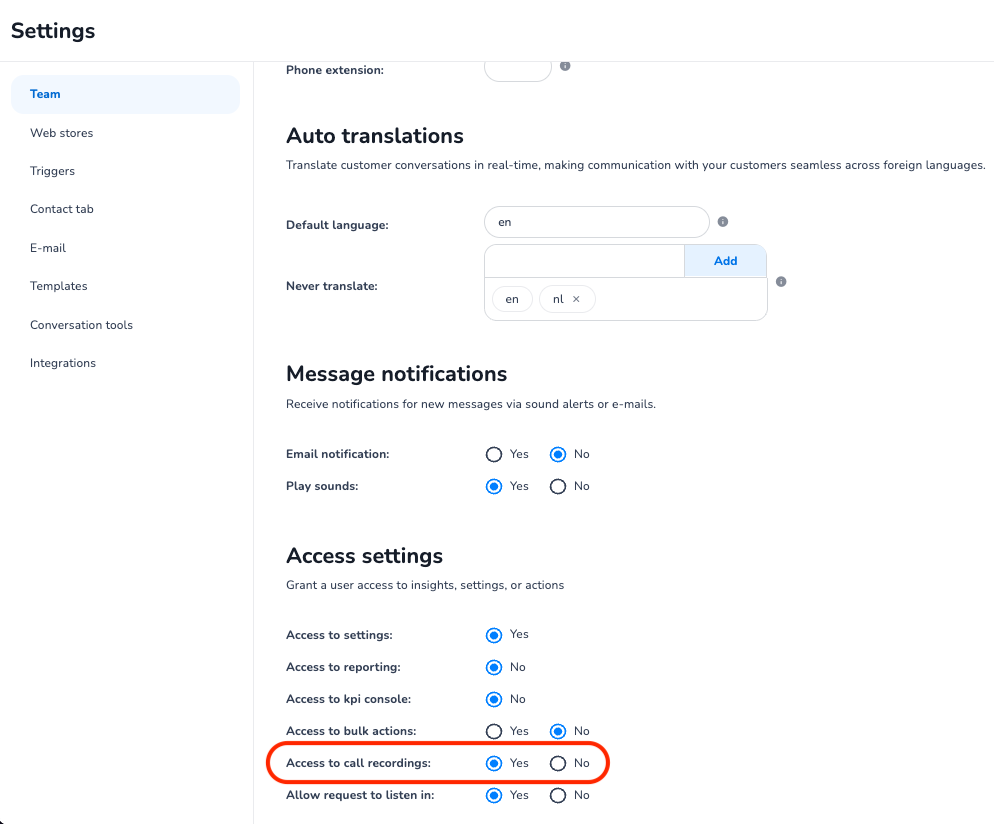
Whenever access to call recordings is granted to a User, it will display an audio player in the message-bubble of the call recording:

Whenever no access to call recordings is granted to a User, a message bubble with the filename of the recording is displayed. This way, the call recording can still be found through the Voice manament App under Audio files. The user still needs permission there to be able to listen to or download the call recording.

Please be aware that we could already display either the audio player or the file path to the recording, but this was managed on subscription level. Now it's possible on user-level.
Audio file specifications
Location:
-
Navigate to the “Voice managent” app
-
Navigat to Audio files
-
Pbx_Recordings
-
Find files based on filenames described below
-
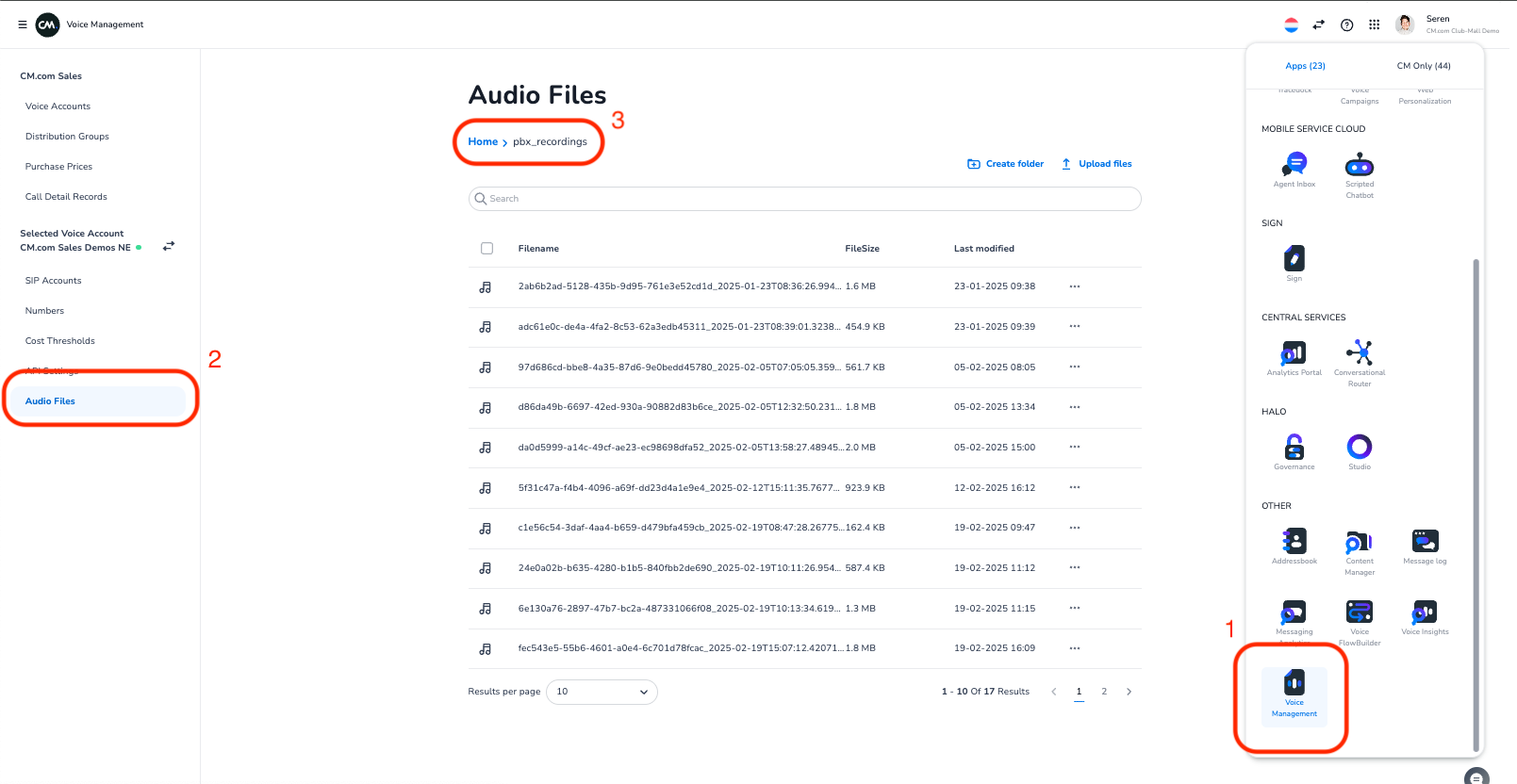
Filename:
-
This represents the name of the file where the recording has been made from. This is formatted as
CallId_yyyy-MM-ddTHH_mm_ss.zzzz.wav. The timestamp is based on when the recording has started.
Filetype:
-
Bit rate: 128 kbps
-
Sample size: 16 bit
-
Channels: Mono
-
Audio sample rate: 8 kHz (8000 Hz)
-
Audio codec: PCM
-
Filename extension:
.wav
Audio file retention
All call recordings will remain available within the audio manager for up to 60 days.
